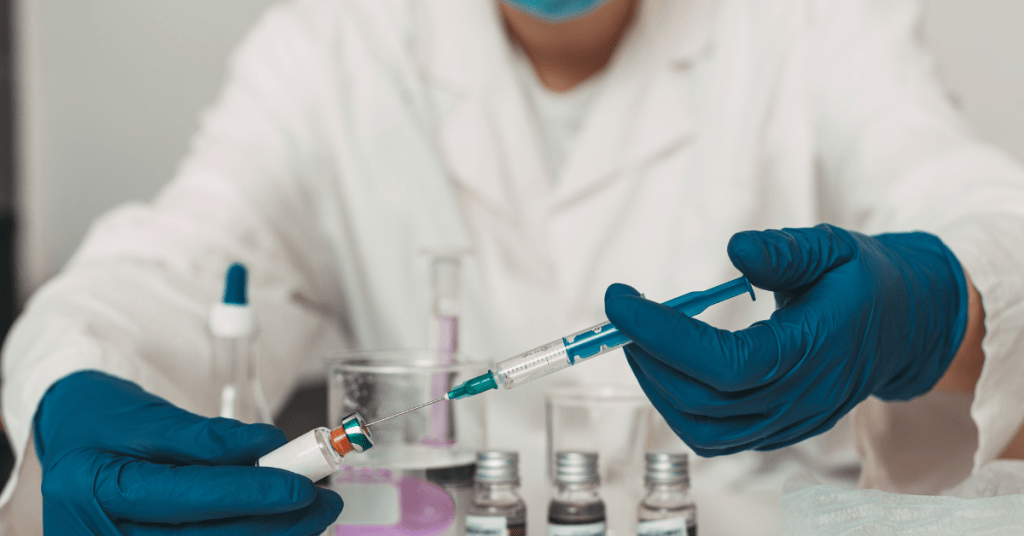Human Metapneumovirus (HMPV) is a respiratory virus that has gained attention in recent years due to its significant impact on global health, particularly among children, the elderly, and immunocompromised individuals. While treatments for respiratory infections have advanced significantly, the development of vaccines remains the cornerstone of prevention efforts for many viruses, including HMPV.
Here we delve into the current state of HMPV vaccine development, the challenges scientists face, the progress made, and what the future holds for this crucial field of research.

Why Develop an HMPV Vaccine?
The development of an HMPV vaccine is driven by several key factors:
1. High Infection Rates
HMPV is a leading cause of respiratory infections worldwide. While many cases are mild, the virus can cause severe illness, especially in vulnerable populations.
2. Impact on Vulnerable Populations
The most affected groups include:
- Children under 5 years old
- Elderly individuals
- People with underlying health conditions
3. Seasonal Outbreaks
HMPV tends to cause seasonal outbreaks, primarily during late winter and early spring. These outbreaks place significant strain on healthcare systems.
4. Lack of Targeted Therapies
Currently, there is no specific antiviral treatment for HMPV. Management is largely supportive, underscoring the need for preventive measures like vaccination.
Understanding the Challenges in HMPV Vaccine Development
Developing an effective vaccine against HMPV is a complex task due to several factors:
1. Viral Diversity
HMPV has two main genetic lineages (A and B), each with sublineages. A vaccine must provide broad protection against these diverse strains.
2. Immune Response Complexity
Understanding the immune response to HMPV is crucial. While natural infection provides some immunity, reinfections are common, indicating that long-lasting immunity may be difficult to achieve.
3. Safety Concerns
Past experiences with vaccines for respiratory viruses, such as the early RSV vaccines, have shown that immune responses can sometimes exacerbate disease. This makes safety a top priority in HMPV vaccine research.
4. Pediatric Considerations
Since young children are one of the primary targets for an HMPV vaccine, researchers must ensure the vaccine is safe and effective in this age group, including infants.
Progress in HMPV Vaccine Development
Despite these challenges, significant strides have been made in the quest for an HMPV vaccine:
1. Preclinical Research
- Animal Models: Researchers have developed animal models, including mice and primates, to study HMPV infections and test vaccine candidates.
- Understanding Immunity: Studies have focused on the immune response to HMPV, particularly the role of neutralizing antibodies and T-cell immunity.
2. Vaccine Platforms Under Investigation
Several approaches are being explored to develop an effective HMPV vaccine:
a. Live-Attenuated Vaccines
- These vaccines use weakened versions of the virus that cannot cause severe disease but still stimulate an immune response.
- Live-attenuated vaccines are promising for inducing robust immunity but must be carefully engineered to avoid safety issues.
b. Subunit Vaccines
- Subunit vaccines use specific viral proteins, such as the fusion (F) protein of HMPV, to stimulate immunity.
- These vaccines are generally safe and well-tolerated but may require adjuvants to enhance their effectiveness.
c. Virus-Like Particles (VLPs)
- VLPs mimic the structure of the virus without containing genetic material, making them safe and effective in stimulating an immune response.
d. mRNA Vaccines
- Following the success of mRNA vaccines for COVID-19, researchers are exploring their potential for HMPV.
- mRNA vaccines can be rapidly designed and updated, making them an attractive option for combating viral diversity.
3. Clinical Trials
Some vaccine candidates have progressed to early-stage clinical trials, where their safety and efficacy are being evaluated in humans. Results from these trials will guide the next steps in vaccine development.

Current Challenges and Roadblocks
While progress is being made, several obstacles remain in the path toward an approved HMPV vaccine:
1. Limited Funding
HMPV does not receive the same level of attention or funding as other respiratory viruses like influenza or RSV. This slows the pace of research and development.
2. Complexity of Clinical Trials
Designing and conducting clinical trials for HMPV vaccines is challenging due to the seasonal nature of the virus and the need to include diverse populations.
3. Balancing Safety and Efficacy
Ensuring that the vaccine is both effective and free of adverse effects is a critical and time-consuming process.
4. Manufacturing and Distribution
Once a vaccine is developed, scaling up production and ensuring equitable distribution, especially to low-income countries, will be significant challenges.
What’s Next for HMPV Vaccine Development?
The future of HMPV vaccine development is promising, with several exciting developments on the horizon:
1. Advancements in Vaccine Platforms
- mRNA Technology: Leveraging mRNA platforms could accelerate the development of HMPV vaccines.
- Innovative Adjuvants: Research into novel adjuvants could enhance the immune response to subunit vaccines.
2. Collaborative Efforts
- Partnerships between governments, academic institutions, and pharmaceutical companies are essential to pool resources and expertise.
- Global health organizations can play a key role in funding and coordinating research efforts.
3. Focus on High-Risk Groups
- Targeted vaccination strategies for high-risk populations, such as infants and the elderly, will be crucial.
- Combination vaccines that protect against multiple respiratory viruses, including HMPV, could be an efficient solution.
4. Ongoing Surveillance
- Continuous monitoring of HMPV genetic diversity and epidemiology is necessary to ensure vaccine effectiveness.
Why HMPV Vaccine Development Matters
Developing a vaccine for HMPV is not just a scientific challenge but a public health priority. An effective vaccine could:
- Reduce hospitalizations and healthcare costs associated with severe HMPV infections.
- Protect vulnerable populations, such as young children and the elderly, from severe respiratory illness.
- Prevent seasonal outbreaks and their associated strain on healthcare systems.
The development of an HMPV vaccine has the potential to significantly reduce the burden of respiratory illnesses worldwide. While challenges remain, the progress made so far is encouraging, and ongoing research is paving the way for innovative solutions.
As we look to the future, the integration of new technologies, collaborative efforts, and sustained funding will be critical to overcoming the hurdles in vaccine development. The promise of a safe and effective HMPV vaccine is not just a scientific aspiration—it’s a public health imperative.
For more information on respiratory health and emerging medical advancements, visit our Ask a Question page. Stay informed, stay proactive, and let’s work together for a healthier future.

